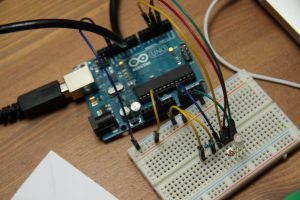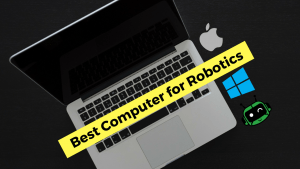For the last eight years, my daily driver was a mid-2012 MacBook Pro. I bought it new from BestBuy for engineering school, upgraded it in 2018, added a new battery earlier this year, and it still works today. A couple of weeks ago, I made the crazy purchase of a 16' MacBook Pro with specs that’ll set you back a pretty $3700 + tax.
In this post, I’m going to share with you my experience moving from the mid-2012 MacBook Pro to the 16″ 2019 MacBook Pro and whether or not it was worth spending thousands of dollars on a new computer.
Before we begin, I want to say that I’m 100% on board with the fact that paying $3700 on a computer is nuts. I bought my mid-2012 Mac for just under $1500, so dropping over $3000 on a new computer is a completely foreign experience for me. (And maybe it is for you too!)
However, I also want to mention that Apple computers are seemingly indestructible. And my mid-2012 MBP still works. I’m going to explain why I made this upgrade (with a perfectly good and working computer) and why you might want to consider upgrading too.
[amazon box=”B083745LCX,B081FV1Y57″ template=”list”]Why I bought the 16″ MacBook Pro
As I mentioned, my mid-2012 MBP still works great. The new computer wasn’t to replace a dead computer. It was to make my video editing process less tedious.
If you didn’t know, we have some awesome new courses here at Learn Robotics, and a good chunk of what I create is High Definition interactive videos for our lessons. This is unlike any experience in the educational and engineering space—our content provides a modern and entertaining way to learn robotics!
I’m spending more time in Final Cut Pro (FCPX)
My courses include a wide range of mixed media including high-quality video demonstrations. You can check out and sign up for courses here if you’re interested.
[products ids=”49200, 49202″ columns=”2″ orderby=”id”]A few weeks ago, I was in the process of upgrading our course videos, which meant a lot of planning, recording, editing, and post-processing. This project as a whole was a huge undertaking, let alone processing tens of videos shot in 4K on an eight-year-old computer.
Running FCPX on a mid-2012 Mac is possible, but as soon as you start adding in 1080p, 4K footage with multi-cam edits, color correction, audio correction, etc, it starts to become a huge headache.
Just to give you an example, my (upgraded) mid-2012 Mac had pretty great specs:
- 2.9GHz dual-core Intel Core i7 processor (Turbo Boost up to 3.6GHz) with 4MB L3 cache
- 16 GB of 1600MHz DDR3 memory
- 2X 500GB SSD
- macOS High Sierra
However, it lacked the video graphics and processing power needed to preview and render videos quickly. Editing multi-cam clips became troublesome because I couldn’t playback footage while using the multi-angle viewer.
It just takes too darn long to deal with — even with patience
Additionally, a 1GB 1080p video file was taking about 30 minutes to render — yikes!
Long story short, it was taking forever to create videos for the courses, and it was time and energy I didn’t want to spend waiting for programs to load and videos to render.
I was seeing the spinning wheel of death more than I ever had, and I was crashing FCPX more than I was comfortable with.
So, I set out to research and look for a brand new Mac, which is how I ended up with the 16″ MacBook Pro.
My 16″ MacBook Pro Specs
I’m a huge believer in buying the best you can afford when it comes to tech—especially computers!
Additionally, computers are instantly outdated the minute you buy them, but if you plan on keeping yours for a while, it’s a good idea to invest in better specifications.
I tend to hold on to technology for a while. (Remember that 8-year old MBP I had previously?). So I opted for more RAM and a larger SSD.
The new 16″ MBP is not upgradable like the mid-2012 MBP, that means, whatever spec you buy it with is what it has. At least until someone figures out a good way to hack it (lol).
Here are the specs for my new 16″ MBP:
- 2.3 GHz 8-Core Intel Core i9
- 32 GB 2667 MHz DDR4
- 2 TB SSD
- AMD Radeon Pro 5500M 8 GB
If you’re interested in checking this model out, you can find it on Apple or BestBuy.
The UX is a world’s difference (and it should be)
While the screen isn’t 4K, it is still gorgeous, and the new touch bar and the keyboard is a joy to use. I have zero complaints about this computer (and I shouldn’t) considering the price point.
The user experience is phenomenal. If you’re coming from the 2012 MBP, like me, you’ll be very impressed with how much fun and luxurious this computer feels.
[amazon box=”B085CNGYV7,B016QO5YNG,B071ZZTNBM” template=”list”]You don’t even need a second monitor. I still use one, but the screen with the minimal bezel is beautiful.
MacBook Pro Specs You Should Consider for FCPX Video Editing
If you’re like me, and you’re coming from an older MacBook Pro, wanting to do more rigorous video editing, then you’ll want to consider the following specs.
There are a ton of resources out there on what to buy, and I highly recommend checking those out.
Here are a couple of videos that helped me make my decision:
Making a new computer purchase is very challenging—especially when you’re spending thousands of dollars. If you are someone who uses a computer every day, then it’s important to make sure you have the right specification to maximize your efficiency and make your job easier all around.
This becomes a balance game between choosing the right specs without overpaying on unnecessary features. In the next few sections, I’ll explain why I chose this particular option to help you decide what you might want to consider as your buying a new Mac.
Why I chose the 8-core i9 Processor
This is a bit of a fluffy answer, but the main reason I chose the 2.3 GHz 8-core i9 is that I wanted an i9 processor. If I keep this computer two years or longer, which I probably will, then I don’t want a low or mid-range processor. For longevity’s sake, it made sense to me to get the i9.
If you’re wondering why I didn’t buy the 2.4GHz model, it’s because I read that there’s not much of a noticeable difference between the 2.3GHz or 2.4 GHz processor. Instead of spending $200 more for the 2.4GHz, I decided to upgrade the memory.
How much RAM should you get in 16″ MacBook Pro (or any laptop)?
Speaking of RAM, my new computer has 32 GB of RAM. This is double what my mid-2012 MBP can support. I was half thinking I’d get 64 GB of RAM, but then I realized how ridiculous that’d be.
[amazon box=”B083745LCX, B07YZ48HCT”]For most people doing regular tasks, 16 GB of RAM is plenty. I wouldn’t buy a computer today with just 8 GB RAM. That’s my thought on it.
You can check to see how much RAM you use on a Mac by opening the Activity Monitor and viewing the Memory tab. If you’re sitting close to 16 GB, then it might be wise to bump to 32 GB.
If you’re going to do video editing or graphics work or use Virtual Machines, then 32 GB or 64 GB might make more sense. If you need 64 GB of RAM, you’ll know you need it. Most people don’t, even if it sounds like a cool option.
I decided to bump up my RAM to 32 GB for both FCPX and any Virtual Machines (VMWare) I decide I want to use in the future. (Sometimes you need to run Win 10 for engineering programs.)
Why I chose upgraded VRAM
In a lot of the guides and videos I used in my research, people recommended to spend the extra $100 and get 8GB of VRAM. Might be overkill, might be perfect, but for $100 I figured if I’m buying this computer for now and then, it’d be worth it for me. Plus for UHD video rendering, I’ll be able to capitalize on better performance overall.
Storage options for the 16″ MacBook Pro
The standard storage option for the 16″ MacBook Pro is a 512 GB SSD, which is great. For light computer users, this should be sufficient. If you have a lot of photos or videos, then bumping up to 1 TB is a good idea.
I chose the 2 TB option because I’m editing a lot of 4K footage. It makes sense to have the extra room built-in to my computer. Also, I ended up purchasing my 16″ MBP through Apple’s refurbished program, which allowed me to get a 2 TB drive for the price of 1 TB.
I know refurbished products can make some people cringe, so I want to take some time talking about why I chose this route, and what I think of it. (In case you’re considering Apple’s refurbished program or if this is the first time you’re learning of it.)
[amazon box=”B06W55K9N6″ template=”list”]Should you buy a Refurbished MacBook Pro?
My short answer is yes.
If you’re interested in saving money, I recommend checking out Apple’s Certified Refurbished store.
According to Apple, “all refurbished Mac models are backed by a one-year warranty, have free delivery and returns, and also include full functional testing, genuine Apple part replacements (if necessary), and a thorough cleaning…”
Historically, I’ve had a great experience with refurbished Macs from Apple. I purchased a refurbished iMac for my mom a few years ago, without issues. The refurbished store can be pretty hit-or-miss, but if you can find the spec you want, you can save hundreds of dollars.
The 16″ MBP that I purchased costs $3699 + tax through the Apple Store (and on BestBuy). This same model cost me $3109 + tax. Crazy savings! Plus the added benefit of trying out the computer for 14-days with free delivery and returns.
With that said, I wouldn’t recommend buying a refurbished Mac through BestBuy or other 3rd-party resellers. I’m not confident that they are as trustworthy as Apple is directly, and I haven’t had good luck with BestBuy’s open box items.
Other ways to save on the 16″ MacBook Pro
If you’re not looking to shop refurbished, which is fine btw, then I recommend looking on Amazon.
[amazon bestseller=”16 MacBook pro” template=”list” items=”3″]A lot of times they’ll put particular 16″ MBP models on sale that are a lot less than buying from Apple directly. This is a great way to get a new model with free 2-day shipping while saving money.
The only thing that I’ll say about Amazon, is that it can be tricky to find particular models if you have a set specification you want to buy. Oftentimes it’s easier to find these specs through Apple, so just keep that in mind while you’re shopping.
I’m not video editing but I want the 16″ MBP, what spec should I buy?
Finally, I wanted to take a few minutes and talk about some alternative specs you should consider if you want the new 2019 MacBook Pro 16″, but you don’t want to spend $3700. Depending on what you use your Mac for is going to dictate what I’d recommend checking out.
More specifically, I want to talk about the average user and the engineering student.
The Average User looking at the 16″ MacBook Pro
Let’s take a look at the average user who wants to purchase a 16″ MBP. This person might be someone who’s either new to using a Mac or needs to replace an old computer. Typical activities might be web browsing, light photo editing, writing emails, and using basic apps like MS Office.
In this case, I’d recommend the base model 2019 MacBook Pro for $2399.
Additionally, if this person wanted to save money, and didn’t mind having a smaller screen, they could check out the 13' MacBook Pro with an i5, 16 GB RAM, and 512 GB SSD for $1649.
[amazon box=”B081FZV45H,B07S1ZBNHS” template=”list”]Like many recommendations out there, I wouldn’t recommend “maxing out” the specs on a 13″ MacBook pro because the 16″ MacBook Pro base specs start to become more affordable as you add options. Just keep this in mind if you plan to build your own Mac.
The Engineering Student looking at the 16″ MacBook Pro
If you’re an engineering student considering the 16″ MacBook Pro, I’d recommend the i7 processor with at least 16 GB RAM and a 1 TB SSD. If you know you’re going to use Bootcamp to Win 10 or Virtual Machines (Virtual Box or VMWare Fusion) within macOS, then upgrading to 32 GB RAM and 8 GB VRAM might make sense.
In most cases, unless you’re going to add a video or audio engineering to things you’re working on, the base model with upgraded memory or storage is probably sufficient.
Here are some models I’d look at more specifically:
- 2019 MacBook Pro: 16 GB RAM, 1 TB SSD (base model)
- 2019 MacBook Pro: 32 GB RAM, 1 TB SSD (more memory + storage)
- 2019 MacBook Pro: 32 GB RAM, 2 TB SSD (more memory + storage + what I have)
If you have extra money to burn, or you know you’ll need more RAM, then, by all means, check out the 64 GB RAM + 1 TB SSD model!
Whether or not you upgrade to the 8-core i9 is completely up to your preference and your budget. If you plan on using this computer all four years and beyond, then it might make sense to get the i9 processor.
If you’re in engineering and looking for a new laptop (maybe not a Mac), you may also want to read our guide on engineering laptops.
Was spending thousands on a 2019 MacBook Pro 16″ worth it?
I’m two weeks in on using this computer, and I love it.
I spend at least 8 hours (if not more) on my computer every day, 7-days per week, so having the larger screen and better user experience matters more than I ever realized.
Coming from an eight-year predecessor, I didn’t know what I was missing out on.
Furthermore, I also want to point out that if I didn’t have trouble rendering a 1080p video, then I’d still be using my mid-2012 MBP. That model is awesome, so if you have one and haven’t upgraded it yet, then you’re missing out on its full potential. You can read more about the full upgrade here.
Additionally, if I didn’t have video editing tasks, but needed a new computer, then I probably wouldn’t have spent over $3000 on this computer. It would have been more realistic to purchase the base model 6-core i7 with 16 GB RAM and a 1 TB SSD.
[amazon box=”B081FV1Y57″]In conclusion, since I plan on having a lot of videos for upcoming courses and managing our growing YouTube channel, I see this as an investment in Learn Robotics and my overall productivity. Added efficiency is super important to me, and being able to maximize my output as an entrepreneur adds value within itself.
What do you think about this upgrade? Let me know your thoughts in the comment section below!
And if you enjoyed this article, give it a share on your favorite social media platform!




